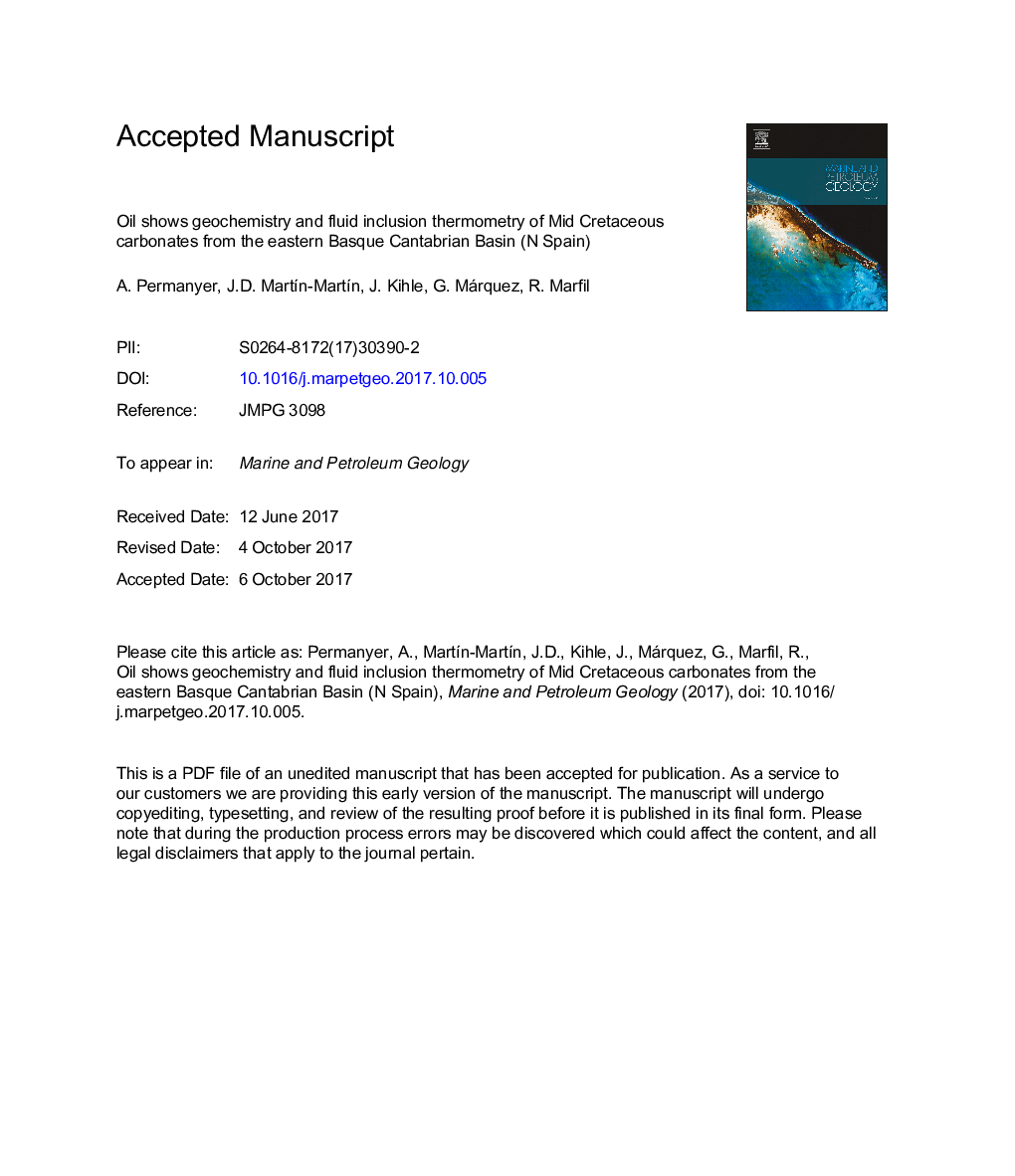| کد مقاله | کد نشریه | سال انتشار | مقاله انگلیسی | نسخه تمام متن |
|---|---|---|---|---|
| 8909119 | 1637133 | 2018 | 42 صفحه PDF | دانلود رایگان |
عنوان انگلیسی مقاله ISI
Oil shows geochemistry and fluid inclusion thermometry of Mid Cretaceous carbonates from the eastern Basque Cantabrian Basin (N Spain)
دانلود مقاله + سفارش ترجمه
دانلود مقاله ISI انگلیسی
رایگان برای ایرانیان
موضوعات مرتبط
مهندسی و علوم پایه
علوم زمین و سیارات
زمین شناسی اقتصادی
پیش نمایش صفحه اول مقاله

چکیده انگلیسی
Surface liquid and solid hydrocarbons are common in Cretaceous carbonate exposures throughout the Basque Cantabrian Basin (N Spain). This study investigates the oil shows that appear in the upper Albian-lower Cenomanian reefal limestones cropping out in the eastern margin of the basin in order to assess potential source rocks and common characteristics with other oil occurrences in the basin. Specifically, the study focuses on (i) the petrography and fluid inclusion thermometry of the host rock and cements, and (ii) geochemistry of the hydrocarbons including biomarkers and isotopes. Geochemistry results indicate that the studied oils, in a way similar to previously reported hydrocarbons from the eastern Basque Cantabrian Basin, were generated from marine carbonate source rocks deposited in a hypersaline environment. However, their isotopic signatures are notably different, and thus discard a common source rock. Moreover, the studied oils are notably different from those reported elsewhere in the basin, both in the western and northern parts. The petrography of the calcite cements and the fluid inclusion thermometry suggests a scenario of condensates to light oils HC migration trapped in burial calcite cements at a minimum temperature of 174 °C. The generation, migration and entrapment of these oils took likely place between Turonian and Campanian time in close association with the elevated heat flow resulting from the rift extension. Following this stage, a second entrapment of heavy to asphaltene-rich oils occurred at 72 °C, likely during the Late Cretaceous to early Cenozoic uplift related to the early stages of inversion of the Basque Cantabrian Basin. The elevated temperature of the oil entrapment suggests the occurrence of abnormal geothermal gradients in the eastern Basque Cantabrian Basin during the middle Late Cretaceous, which is ultimately associated with the opening of the Bay of Biscay.
ناشر
Database: Elsevier - ScienceDirect (ساینس دایرکت)
Journal: Marine and Petroleum Geology - Volume 92, April 2018, Pages 255-269
Journal: Marine and Petroleum Geology - Volume 92, April 2018, Pages 255-269
نویسندگان
A. Permanyer, J.D. MartÃn-MartÃn, J. Kihle, G. Márquez, R. Marfil,